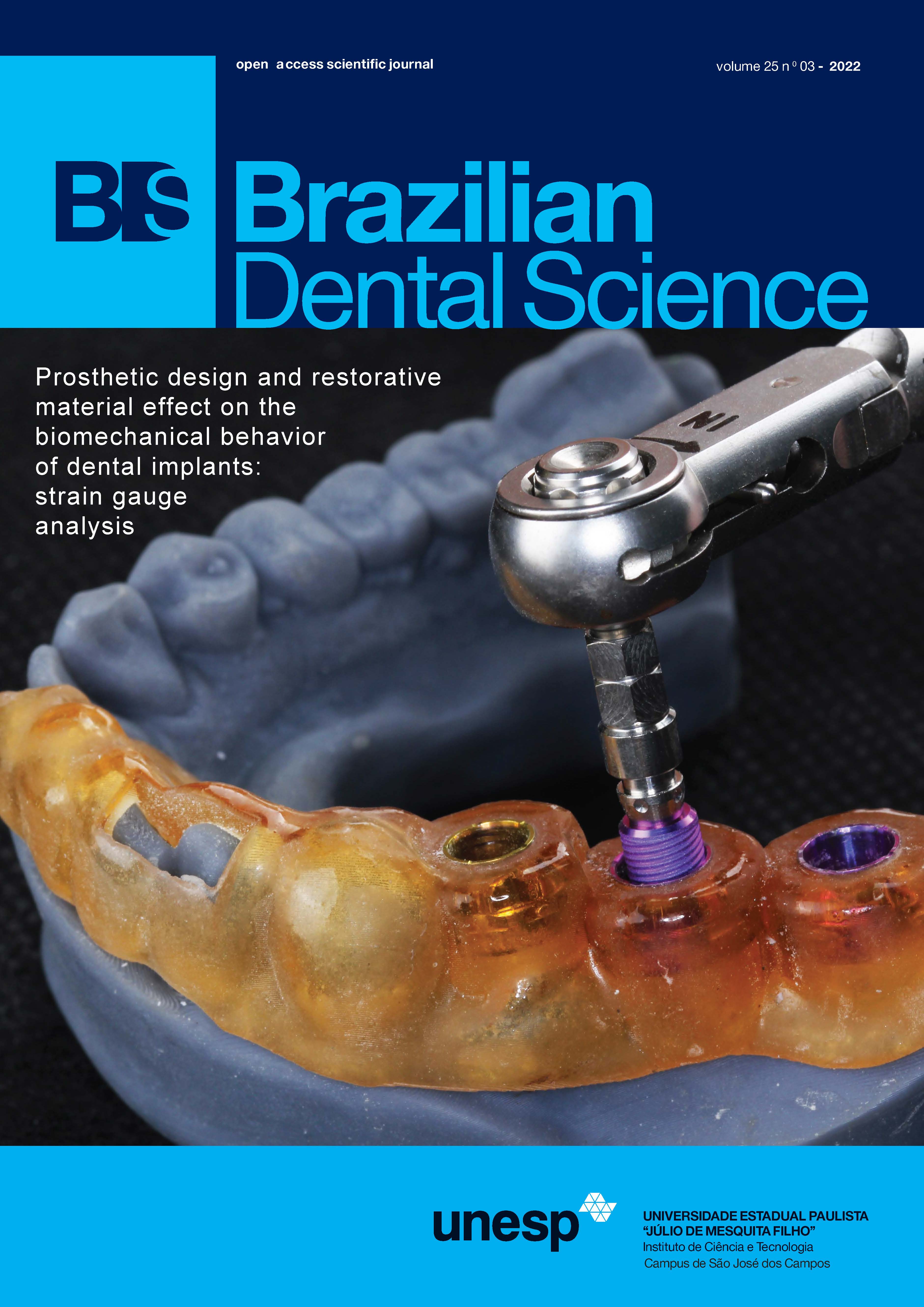Biomechanical, operative and biological aspects of the cervical margin relocation: a case report
DOI:
https://doi.org/10.4322/bds.2022.e3158Abstract
The clinical success of tooth-colored indirect restorations has been confirmed in several studies. However, inlays and
onlays restorations in Class II cavities with deep gingival margins can still be considered a clinical challenge. With
the purpose of facilitating the execution of the operative procedures in intrasulcular margins and reducing the risk
of restorative failures, the technique of cervical margin relocation has been explored as a noninvasive alternative to
surgical crown lengthening. This work aims at discussing through a case report the biomechanical, operative and
biological aspects in the treatment of teeth with deep gingival margins. Therefore, given the therapy applied in the
clinical case presented, it is concluded that the cervical margin relocation with composite resin is advantageous since
it eliminates the need for surgery, allowing the implementation of indirect restorations in fewer clinical sessions,
not causing damage to periodontal tissues once it provided good finishing and polishing with the establishment of
a correct emergence profile, allowing flawless maintenance of gingival health after one year.
KEYWORDS
Dental restoration failure; Dental marginal adaptation; Dental Cavity Preparation; Composite Resins; Inlays.
Downloads
Downloads
Published
How to Cite
Issue
Section
License
Brazilian Dental Science uses the Creative Commons (CC-BY 4.0) license, thus preserving the integrity of articles in an open access environment. The journal allows the author to retain publishing rights without restrictions.
=================




























